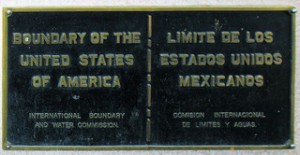The United States and Mexico share a long border criss-crossed by social ties and dense webs of economic activity. Nonprofit organizations on both sides cooperate to provide health care and housing to the needy, promote economic development, and mount educational and arts programs. Their purposes are peaceful, yet these nonprofits find themselves at the front lines of heightened security efforts. Smuggling and the drug trade pose constant threats of violence and kidnappings. And since 9/11/2001, the United States has put in place elaborate rules to block terrorists or flows of funds for dangerous activities.
In the new security environment, what happens to nongovernmental organizations and their daily work of fostering cross-border networks and cooperation? To find out, I used a research grant from the Department of Homeland Security to conduct dozens of interviews and make observations at six nongovernmental organizations operating in two important border areas:
- The twin-city region of El Paso-Ciudad Juárez has historically been perceived as one intertwined urban area. Prior to the intense fortification of the border, it was difficult to determine where one city ended and the next began.
- San Diego-Tijuana is the busiest southwest border location, with 60 million crossings per year. Although interdependent, San Diego has a growing high-tech and biotech economy whereas Tijuana has many small manufacturers and service enterprises.
New Security Challenges

Nonprofits working on the Southwest border are operating in a more complex environment in the aftermath of September 11th. Possible Al Qaeda infiltration across the border has been a growing concern for national and state bureaucracies. Intelligence reporting routinely points to terrorist plots, in addition to identifying smuggling networks associated with drugs and human trafficking. Efforts to slam shut the southern border as a backdoor for illegal activity and crossings have led in dramatically tighter security—which, in turn, affects the operations and connections of nongovernmental organizations.
The United States Agency for International Development now requires organizations to which it gives grants to sign an Anti-Terrorist Certification and the Culture of Lawfulness agreement—which lay out specific rules and procedures to be followed. The Bureau of International Narcotics and Law Enforcement Affairs helps nongovernmental organizations enforce the new rules. The aim is to prevent corruption in nonprofit activities or in the funding provided by philanthropic institutions, to make sure that criminals or terrorists cannot use nonprofit groups as fronts for illicit operations.
The Consequences for Nonprofits
My field research on nongovernmental groups operating in El Paso-Ciudad Juarez and San Diego-Tijuana reveals some of the little-known and unintended side-effects of the new security concerns and practices.
- From talking to people who work at border nonprofits, their fear of drug-related violence and kidnappings is evident. Many groups have responded by no longer taking people from the United States to do work across the border.
- Financial operations have become more complex for these organizations, because they have to account for all funds; look into, document, and vouch for their sources; and ensure that no monies come from or flow to terrorist or illegal sources.
- Security arrangements can lead to both pluses and minuses for nonprofits. In San Diego-Tijuana, nongovernmental organizations were burdened by costly disclosure requirements and increased suspicions from donors. But in El Paso-Ciudad Juarez, government funds to improve conditions in violence-prone border areas actually ended up bolstering the nongovernmental sector by encouraging professionalization and community outreach work.
- Until recently, institutions in the United States and Mexico worked collaboratively, sometimes as closely related pairs of the same type of organization. Unfortunately, this model of joint fund-raising for shared projects has become difficult to sustain in the new security environment. Nonprofits now tend to concentrate efforts in their respective countries and devote resources to “their side” of challenges that actually span the border. Artificial and inefficient compartmentalization can be the result.
Resuscitating Cooperation
Security concerns and actions on the U.S.-Mexico border can appear unusual, because they occur in the midst of economic activities tying the two countries closely together, with constant movements of people back and forth across the border. But nongovernmental organizations can feel a strong impact of government actions and rules designed to deal with violence or crime. These nonprofit groups often provide services to disadvantaged people, and the people they help are often those most affected by drugs, crime, undocumented migrations, and other illicit activities. Whether they like it or not, this puts nonprofits and their employees right in the middle of the very activities security authorities are most concerned with eradicating or controlling. Nonprofits have to deal with the dangers, work with security authorities, and continue to build cooperation along and across the border.Current discussions tend to miss these new dilemmas faced by nonprofits operating on the border. The social and cultural effects of the War on Drugs and Terror are often simply overlooked. My research shows this is a mistake. We need to acknowledge the special burdens placed on nonprofits in the United States cooperating with nonprofits in nearby Mexican sites, and recognize how in daily practice they devise ways to adapt their missions to the new atmosphere of heightened security. Furthermore, we should understand that new bi-national solutions will have to be worked out by the local nonprofits themselves, moving well beyond national laws and strategic objectives set in Washington DC or Mexico City.

 Research to Improve Policy: The Scholars Strategy Network seeks to improve public policy and strengthen democracy by organizing scholars working in America's colleges and universities. SSN's founding director is Theda Skocpol, Victor S. Thomas Professor of Government and Sociology at Harvard University.
Research to Improve Policy: The Scholars Strategy Network seeks to improve public policy and strengthen democracy by organizing scholars working in America's colleges and universities. SSN's founding director is Theda Skocpol, Victor S. Thomas Professor of Government and Sociology at Harvard University.